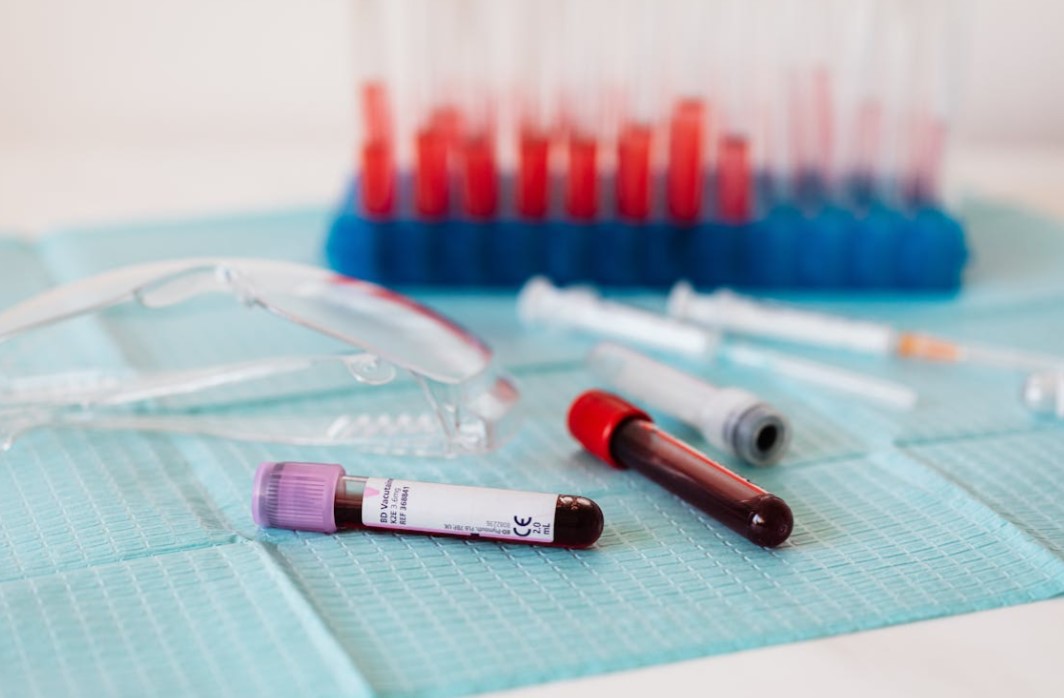Health
How to Diagnose Your Allergies or Intolerances

According to statistics from Food Allergy Research & Education (FARE), approximately 33 million Americans have food allergies. FARE is an organisation that promotes, researches, and educates people regarding food-related allergies.
This means that approximately 1 in 10 adults and 1 in 13 children in the United States have a food allergy. More than half of these adults and at least 40% of these children have experienced a severe reaction.
If you’re looking to diagnose your allergies or intolerances, nurses who have studied np programs online can help. Many allergies and intolerances can be diagnosed through pathology testing.
If you’re looking for information about how to diagnose your allergies or intolerances and the pathology tests available, this guide is for you. It also delves into the importance of diagnosing food allergies and when to see a professional.
What is an allergy or intolerance?
Before delving into how to diagnose allergies and intolerances, it is important to understand what they are and their differences. Also, while the examples used in this article will mainly be food-related, the information can be applied to other types of allergies and intolerances.
Food allergies and food intolerances are commonly confused, as the symptoms of food intolerances can resemble those of food allergies. For example, a few symptoms they can both share include:
- Nausea
- Stomach pain
- Diarrhea
- Vomiting
- Bloating and gas
The difference between a food intolerance and a true food allergy is the body system that is impacted. A true food allergy affects the immune system, and even having a small amount of the offending food can be severe or life-threatening.
In comparison, a food intolerance impacts the digestive system. It means the person has a hard time breaking down a certain food or chemical within the food. Another name for food intolerance is sometimes “food sensitivity”.
For most people, food intolerances aren’t life-threatening, and people are usually able to eat small amounts before any negative impacts. Like food allergies, it’s possible to be intolerant to a range of different foods/chemicals. Common intolerances include:
- Lactose intolerance
- Histamine intolerance
- Gluten sensitivity
Food allergies and intolerances can be diagnosed through pathology testing. Depending on the allergy or intolerance, it can be indicated through a skin prick test or a blood test.

Why it’s important to get diagnosed
If you suspect you have a food allergy or intolerance, it is crucial to get diagnosed. Being able to identify the allergen or food you are intolerant to can help you manage symptoms and prevent life-threatening reactions like anaphylaxis.
Anaphylaxis is a severe, potentially life-threatening allergic reaction. It can occur within seconds or minutes after a person is exposed to or consumes something they are allergic to. For example, peanuts or bee stings.
When a person is going through anaphylaxis, their immune system suddenly releases a flood of chemicals, causing them to go into shock. This is what causes their blood pressure to drop suddenly and their airways to narrow.
Anaphylaxis requires an injection of epinephrine and a follow-up trip to an emergency room. By diagnosing your food allergy, you understand what allergens affect you and can get a prescription for epinephrine from your doctor.
Food allergies and intolerances can also be important to understand for diet and nutrition. For example, if you have to eliminate an entire food group due to an allergy or intolerance, understanding alternatives can help ensure you have a nutritional diet.
Food allergies are rising
Research shows that the prevalence of food allergies and intolerances is increasing around the world. The most common allergens are:
- Egg
- Milk
- Fish
- Wheat
- Peanuts
With allergies and intolerances rising, it’s more critical than ever to get tested if you suspect you or a loved one may have the condition. According to FARE, there are also factors that can influence the risk of developing a food allergy, including:
- Children from rural communities are less likely to develop a food allergy compared to children from urban centers.
- Compared to non-Hispanic White children, African American children are at a significantly higher risk of developing food allergies.
- Having a family history of food allergies, asthma, eczema, or hives.
Despite common belief, it’s also possible to develop food allergies and intolerances later in life. Research shows that approximately half of food-allergic adults in the United States report developing at least one of their food allergies during adulthood.
How to get diagnosed
There is no perfect, singular test to rule out a food allergy or intolerance. The test and process used will depend on the suspected allergy or intolerance. Options for diagnosis include:
- A skin prick test: This test involves placing a small amount of the suspected allergen on the individual’s skin, typically the back or forearm. If the person is allergic, they will develop a raised bump or reaction.
- A blood test: A doctor or allergist can request a blood test to measure a person’s immune system response to particular foods (and other allergens) by measuring the allergy-related antibody known as immunoglobulin E (IgE).
- Specialized blood tests: There exist specialized blood tests that can help diagnose specific food intolerances. For example, the lactose intolerance test can test how well a person’s body breaks down and absorbs lactose.
- Elimination diet: This process is typically used to diagnose intolerances or sensitivities to certain foods or food groups. During this process, a person eliminates the suspected foods for a week or two to monitor any changes.
If you’re looking to diagnose an allergy or intolerance, it’s important to always seek the guidance of a professional. Do not attempt to try and diagnose an allergy or intolerance on your own, as it could be potentially life-threatening.
If you suspect you have an allergy or intolerance, you will need to speak to your general practitioner. They can request the required pathology tests to check for allergies and intolerances. They can also refer you to an allergy specialist (allergist) if required.
-

 Tech2 months ago
Tech2 months agoBest AI Tools for Image Generation in 2025
-

 Food2 months ago
Food2 months agoHard Salami: History, Taste, and How It’s Made
-

 Home Improvement2 months ago
Home Improvement2 months agoThe Benefits of Adding a Bench to Your Living Room
-

 Real Estate2 months ago
Real Estate2 months ago6 Amenities Every Community with 55+ Active Adult Homes in Nashville Should Have






